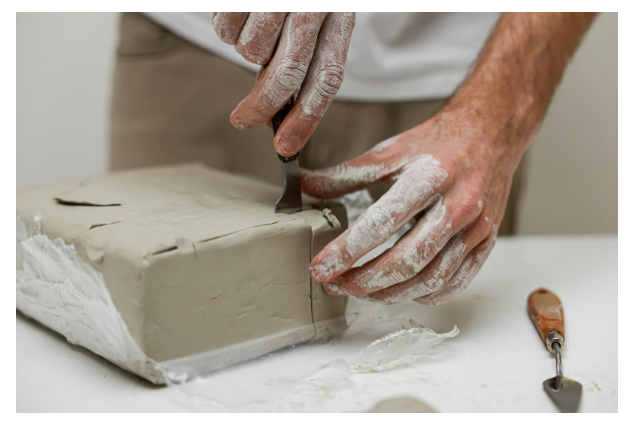Best Ways to Cut a Silicone Mold
Complex models can be difficult to de-mold when making silicone molds. It’s a challenging task. In these situations, a steady hand, accuracy, and attention to detail are necessary while cutting silicone molds, particularly when working with complex designs or patterns. Therefore, cutting the silicon mold is required to make it easier to remove the finished products or models that guarantee the successful casting of perfect duplicates. So, close attention and a well-cut silicone mold are essential for producing precise outcomes, accurate output, and expert results, regardless of whether you’re making a mold for a single use or several casts.
Here, we will go through the best practices and ways for cutting silicone molds and offer some advice to help the process go more smoothly, but your research would also be important in this concern and explain how to use services like Kusla Prototype and Kusla Urethane Casting Service if you require assistance or need more sophisticated techniques, advanced options, and complex alternatives. The silicon mold-cutting process will go more smoothly if you follow these helpful suggestions as a recommendation.
From Big industrial application projects to small-scale businesses such as do-it-yourself (DIY) crafts, silicone molds are widely employed in several manufacturing industries. Since they are incredibly adaptable, strong, and flexible, and because they can capture and have the capacity to detail and withstand temperature changes. Silicone molds are the preferred option for producing premium-quality molds, regardless of whether you’re casting urethane, resin, or plaster.
Need of Cutting to Silicon Molds
When attempting to cast a complicated, multi-part product and the silicone mold needs to be separated into portions for easy cast removal or release, cutting the mold may be essential to facilitate the cast. This is sometimes necessary for huge, delicate, or intricate shapes that are difficult to extract from a single-piece cast without risking or causing harm to either the object or the mold.
For instance, when creating a figurine with intricate details, cutting the mold facilitates and makes it easier to remove, protecting both the mold and the finished piece of cast. However, it’s crucial to understand the precise techniques because improper cutting can destroy or damage the mold.
Tools you get for cutting
Cutting silicone molds does not need many tools or equipment, but having the right ones will make the process safer and easier. The following is a list of equipment you should keep on hand most often:
- Cutting Mat
- Marker
- Scalpel
- Sharp Mold Key Knife
- Knife & Razor Blade
- Lubricant
Cutting silicone molds requires accuracy. It’s crucial when slicing silicone molds; employing a sharp blade guarantees clean and smooth cuts while minimising the risk of tearing and rips. A straight-edge ruler can be useful and assist in achieving straight cuts or when working with multi-part molds. Additionally, marking the desired cut lines beforehand improved control, accuracy, and precision. Utilising a cutting mat will safeguard your workspace; maintaining a tidy surface and applying a small quantity of silicone-safe lubricant (if desired) can facilitate smooth blade movement, reducing the chances of the blade adhering to the silicone.
Essential Steps for Slicing/Cutting Silicone Molds
Set Up Your Workspace:
Make sure you have a clean and flat area on which to work. Keep all of your instruments close to your reach and use the cutting mat in your work area.
Evaluate the Mold and Plan to Cut:
Take a close look at the mold and the item within before making any cuts. Imagine how you want it to be released. You might need to make several incisions if you’re dealing with a complex object because a single cut might not be feasible.
Mark the Cut lines with Markers.
Mark the outline where your cuts will be made with a marker. This will make it easy to reconstruct the mold for later use and help to ensure that your cuts are uniform. Cuts should ideally be made in a natural way where they won’t alter the final cast’s detail.
Start Cutting Gradually Steadily and Slowly:
Start at one end and carefully cut along the designated outline. Maintains a slow and steady hand because hurrying can result in uneven cuts or tearing. It is advisable to keep in mind that it’s preferable to apply light pressure and deepen the cut gradually instead of making a deep cut at once.
Angle the Blade Little Inward:
As you cut, angle the blade slightly inward for a more seamless fit when the mold is put back together. When the mold is reassembled, this generates a “lock” that can stop casting fluids like urethane from leaking. This little angle, which is frequently referred to as an “undercut,” guarantees that the mold’s components fit together securely.
Carefully Separate the Mold:
After making the incision or cut, carefully remove the mold. Work the sides open gradually, without pulling too forcefully. If the mold is difficult to open, look for any areas that may have been missed and carefully cut them until they separate.
Test the Mold to be Fit:
To check if the pieces line up properly, close the mold along the cuts after cutting. Make little modifications if necessary to ensure a tight fit. If you intend to use the mold more than once, this is important since it will keep the finished cast smooth and stop leaks.
Advanced Recommendation for Complicated Molds
You might occasionally need to utilise additional support tools or make more complex cuts for complex or multi-part molds. Consider contacting experts like Kusla Prototype or Kusla Urethane Casting Service if your mold is complicated. These specialised mold-making companies can help you create flawless molds for challenging forms or intricate goods by providing precise cutting and prototype support.
Some of the most sophisticated methods are that:
Registration Keys Method:
For intricate and sizable molds, incorporating small notches, referred to as registration keys, along the cutting line can guarantee precise alignment of the mold on each occasion. These notches interlock, thereby preventing any misalignment during the casting process.
Multi-Part Molding Method:
Some molds require a more complex, multi-part method where multiple pieces are removed in phases as opposed to a single cut. This is particularly helpful for intricate designs. Speaking with a prototype specialist like Kusla Prototype might help you save time and effort if this level of accuracy is needed.
Best Ways to Cut Silicone
The most effective tools and best ways for cutting silicone include the following:
- Die Cutting-1 Silicon
- Die Cutting-2 Rotary
- Knife Slitting
Die Cutting-1 Silicon
Die cutting uses gaskets and a hydraulic press to shape material from large rolls. Dies are made from durable steel rules, ideal for mass production. Die cutters can produce thousands of items per hour with low tooling costs and precise design tolerances of one-tenth to one-thousandth of an inch.
Die Cutting-2 Rotary
Die-cutting uses a steel rule to cut out blank sections, producing intricate shapes from various materials like foam, rubber, plastic, cork, and silicone rubber. Rotary die cuts, applied with or without adhesive, ensure tight tolerances and high repeatability, making it efficient for large-scale production runs.
Knife Slitting
Kusla urethane casting services use knife-slitting, a precision cutting method, to divide master logs into tailored logs, ensuring uniformity and efficiency, resulting in rapid and consistent cuts.
Common Issues and Their Solutions
Despite meticulous preparation, challenges may arise when working with silicone molds. Here are some strategies to resolve these common issues:
Uneven Edges: Should your cuts appear jagged; it may be beneficial to utilise a new blade or to apply a silicone-compatible lubricant to minimise friction. A well-sharp blade is essential for getting precise cuts.
Casting Leaks: If you notice leaks along the cut line during casting, the mold may not be sufficiently secured. Consider using rubber bands or a mold box to enhance stability. Additionally, ensure that your cuts are slightly angled inward for better sealing.
Challenges in Extracting Casts: If you experience difficulty in removing the cast object, it may be necessary to make additional cuts. More intricate designs often require extra-careful cuts to facilitate easier removal.
Alignment Issues: If the mold does not reassemble tightly, the addition of registration keys may be required. For a refined outcome, consider enlisting the services of Kusla Urethane Casting Service, which specialises in creating molds with precise tolerances and optimal alignment.
Our Professional Services
Hiring experts like Kusla Prototype might help you save time and reduce frustration if you’re working on a big project or require a mold with complex details. From simple designs to complex, multi-part molds that fit precisely and endure repeated usage, Kusla Urethane Casting Service can create premium silicone molds that are customised to your demands using professional tools and knowledge.
Access to machinery and high-precision cutting equipment that can perform jobs beyond human capabilities is another benefit of professional services. This is particularly helpful if you need reliable mold production for big runs or are working with commercial-grade casts.
Conclusion
Cutting silicone molds is an art and science, requiring proper tools, a steady hand, and patience. Using the right technique and design assessment can yield perfect casts. Kusla Urethane Casting Service and Kusla Prototype offer assistance for challenging projects.






